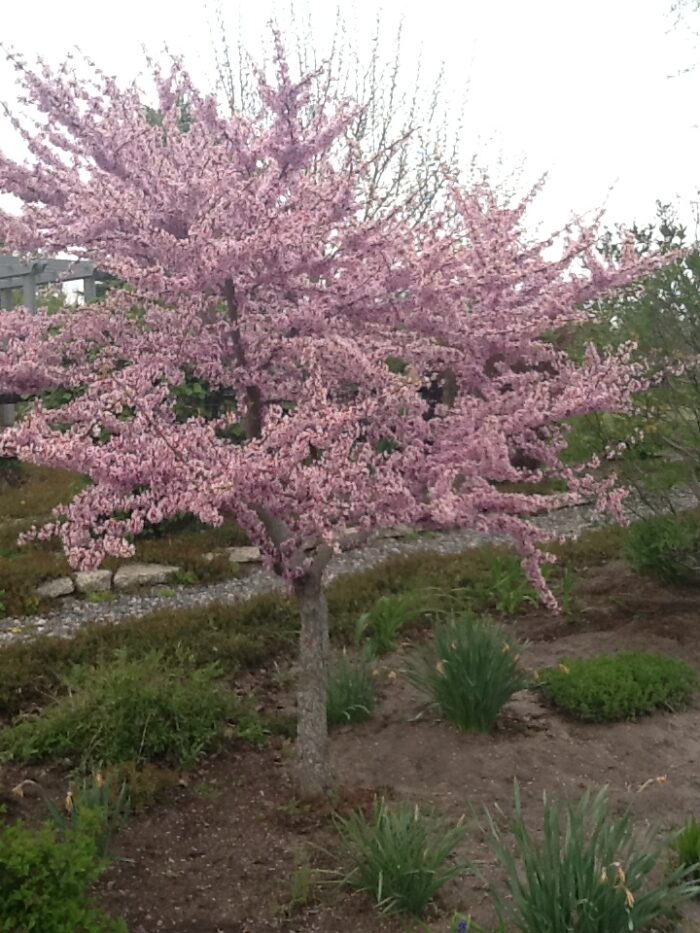Description
Latin Name: Cercis canadensis
Common Names: Redbud, Eastern Redbud, Judas Tree
Zones: 4-9
Mature Height: This species typically grows to a height of 25-35 feet (7-10 meters) with a crown that is slightly wider than tall and rounded. The Redbud often takes the form of a large shrub or a small tree (Missouri Botanical Garden).
Soil / Climate: Native to eastern and central North America, the Redbud thrives in full sun to light shade, though part shade is preferable in hotter climates. It prefers moist, well-drained soil but is adaptable to a variety of soil types. It does not perform well in consistently wet or poorly-drained soils (Missouri Botanical Garden).
Notes: Regular pruning of dead branches helps maintain tree health. The Redbud does not transplant easily, so it’s best to plant it in its final location early on. The tree often has multiple trunks. In early spring, before the leaves appear, the branches and twigs are adorned with numerous showy pinkish-purple flowers, each about ½ inch (1 cm) across, growing in clusters of 4 to 10. These flowers develop into flat, dry seedpods that are 2-4 inches (5-10 cm) long and contain 6 to 12 seeds. The mature pods turn brown and may remain on the tree through winter. The leaves, which alternate along the branches, can be broad at the base with a pointed tip or nearly round with a pointed end. They measure about 3-5 inches (8-13 cm) and are dull green, turning yellow in the fall. The winter buds are tiny, rounded, and range in color from dark red to chestnut (Missouri Botanical Garden). The bark starts smooth and brown but becomes darker, ridged, and possibly scaly as the tree matures. The twigs are very dark brown (Virginia Tech). The Redbud is well-suited as a lawn tree for small properties and works well in small groupings. It is also the state tree of Oklahoma (Missouri Botanical Garden).
Problems: Common issues for this tree include canker, leaf spot, dieback, blights, mildew, and verticillium wilt. Pests may include scale, treehoppers, leafhoppers, Japanese beetles, webworms, borers, and caterpillars (Missouri Botanical Garden).
Wildlife: The seeds provide winter nourishment for birds such as cardinals, northern bobwhite, ring-necked pheasants, rose-breasted grosbeaks, and chickadees. White-tailed deer and gray squirrels also eat the seeds. The flowers are important for honey production by bees.
Cold Stream Farm supplies Redbud trees/shrubs which are grown as bare root seedlings and transplants and sold both wholesale and retail with no minimum order.
Sources:
Additional information on Cercis canadensis can be found on the link: USDA / NRCS PLANTS Database.









Reviews
There are no reviews yet.